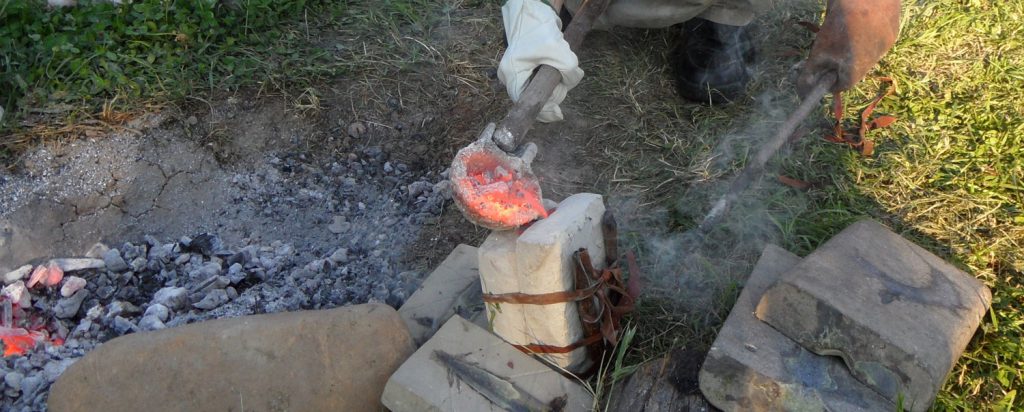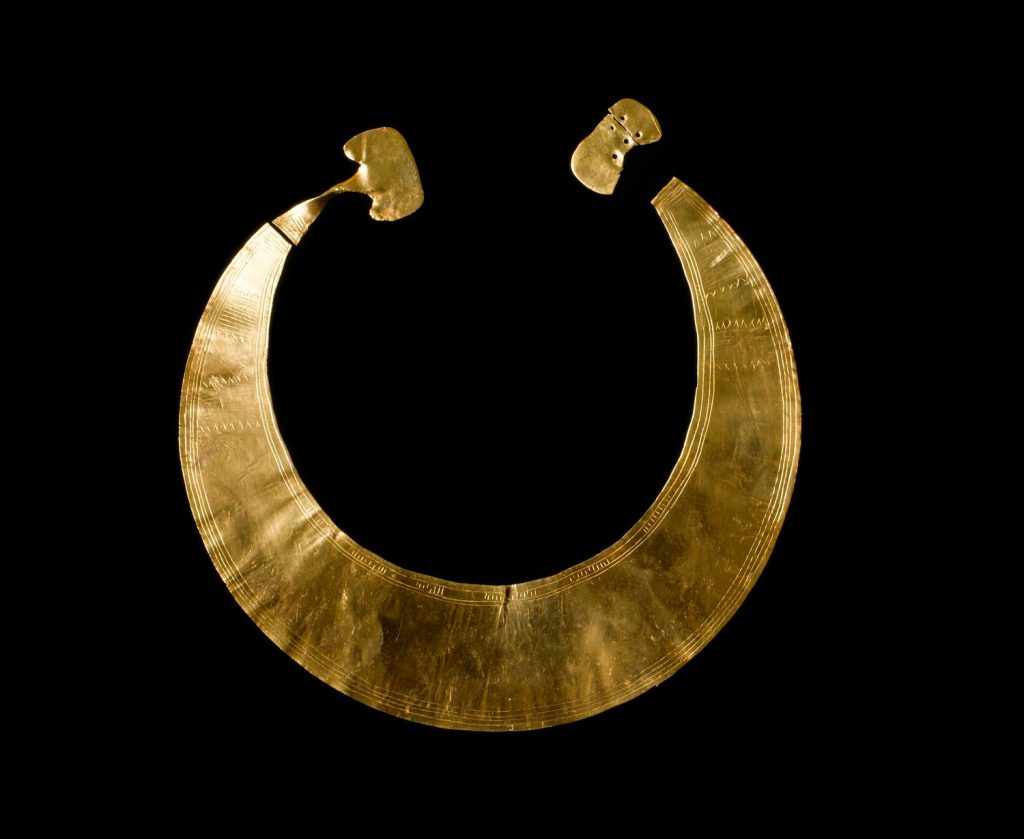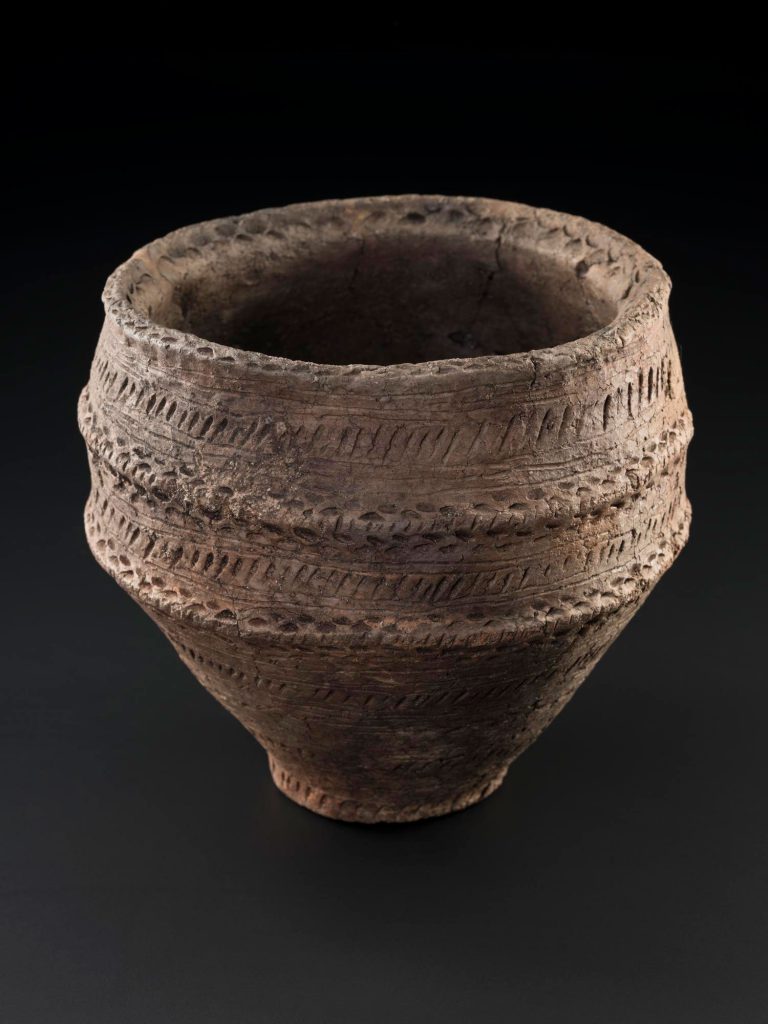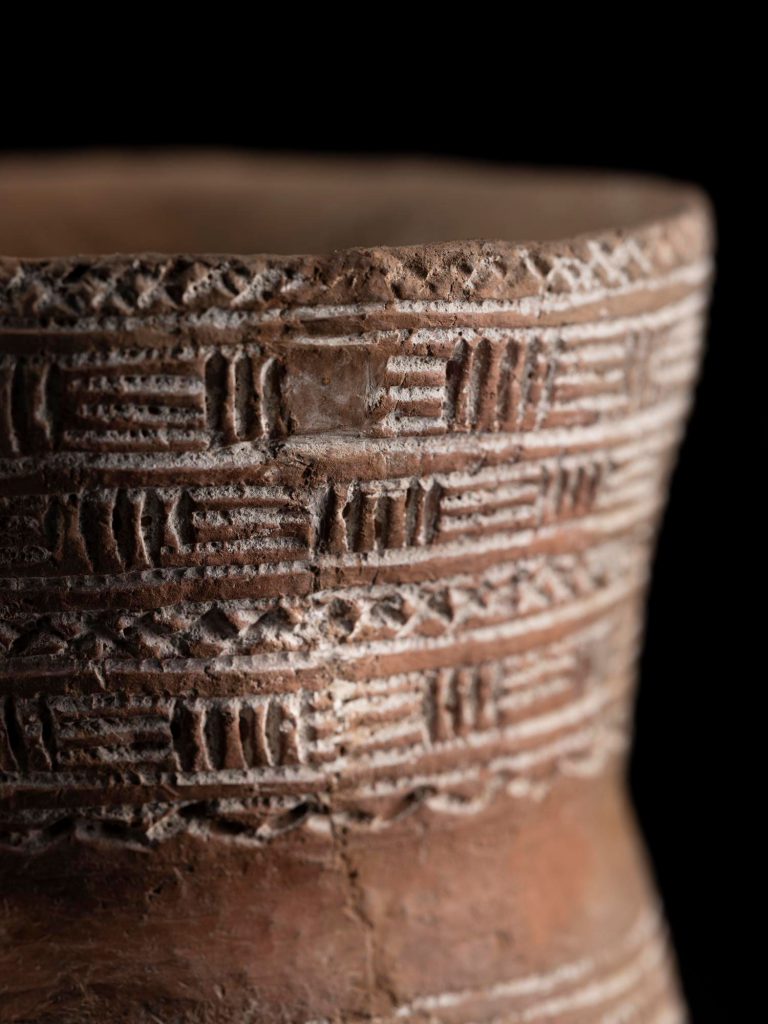Next month, National Museums Scotland will be hosting the annual Later Prehistoric Finds Group conference, this year entitled: Crafting Identities.
This conference will think about how the making and use of Bronze Age and Iron Age objects contributed to the creation and expression of identities in prehistory. There are many different ways to tackle this and many different materials and objects to be explored. In this blog I will focus on a few types of objects that can help us think about the identities of groups and individuals in the past and hopefully whet your appetite for the conference next month.
Special swords
A Bronze Age sword is a beautiful object. It is sleek and sharp, powerful and deadly. It required great skill to use and was no doubt a sign of status in society, perhaps as a warrior or a figure of authority. Many swords were clearly treated with great care and buried in important places in the landscapes, supporting the idea that these were significant objects to Bronze Age communities. Indeed, swords hold a special place in society through to the modern day, often as ceremonial objects.

But what of the people who made such objects? What did it mean to be capable of producing these powerful objects? For Bronze Age swords, manufacture requires a complex process, involving making and using crucibles, clay moulds, bellows, and a whole host of other tools. And of course you need the skill to turn solid rock to liquid metal and pour into a desired shape – no doubt a magical process in Bronze Age society.
This skill doesn’t happen overnight; it is built up over years or decades of experience. To have this knowledge would have set the craftsperson apart as someone important, someone to be respected. It’s easy to understand why people who could make metal objects may have been given a special status in society. When we see a sword, it’s not simply a weapon for fighting, but also a product of a specialised craft.

Glittering gold
We can think about gold objects in similar ways. The earliest Bronze Age goldwork was the result of carefully hammering and decorating gold sheet. Gold collars, known as lunulae, are one of the most visually stunning forms of this. These were symbols of wealth and power – a way to publicly show off and present a certain identity through the bling you wear. Often gold objects were buried with the dead alongside a host of other special objects – perhaps a way to construct a desired identity in the afterlife?

Over time, more complex crafting techniques were developed and gold objects occur in a variety of forms, including bracelets, rings and ornaments. People desired new ways of adorning and expressing themselves. The Iron Age hoard of gold torcs from Blair Drummond, Perthshire, shows a variety of different crafting techniques that no doubt reflected the skills of those involved in the making process as well as the desires of those who possessed and wore the torcs. Recent work on the Netherurd torc terminal from Peeblesshire has involved the insights of modern craftspeople to explore the skills of those who made it.

Previously assumed notions of how these things were made may no longer be correct and this has implications for how we recognise the sophistication of producing these objects. We can extend this to think about how skills were developed and passed on over time and envisage apprenticeships and communities of smiths, perhaps with unifying identities, or maybe even competing ones!
Pots for the people
Pottery shows up in all aspects of prehistoric life. From plain everyday pottery to elaborate forms, vessels are used for eating and drinking, for burying with and containing the dead, and for everything in between. Unlike swords or gold, this is a material everyone would have come into contact with at some point. This remains true today – no doubt many of you are reading this whilst holding a ceramic mug of tea! From this point of view, pottery allows us to think about some of the more communal aspects of the past such as gathering to eat and drink. The use of certain pots at certain events may have all served to cement certain ideas, practices and memories.

Through different styles and decorations of pottery, we can still grasp aspects of regional identities in prehistory or at least regional preferences for certain types of pots. Early Bronze Age pots known as Beakers, Food Vessels and Urns display various designs that would have been applied using fingernails, toothed combs, points of wood or bone and a host of other tools. These were intimately crafted objects and sometimes we can even see the fingerprints of those who made them.
We can only speculate on the relationship between the potters and the people using the pots: did the use of certain designs represent the desires of the consumer? Or the preference of the maker? The shapes of pots and the designs used give us an insight into prehistoric creativity and expression – we shouldn’t forget that people of the past had imaginations! We can also wonder if pot-making was a communal activity as it is in many cultures? If so, we can view pot-making, alongside other crafts activities, as one way of cementing a collective, communal identity – people bound together by their craft.

This blog post is just a glimpse at the potential for thinking about this topic and there is much more to explore. There’s no one way to think about how craft and social identity are linked. On 26 October 2019 we’ll be delving into this further through a range of speakers covering some of the crafts, materials and artefacts presented here, as well as many more!
Crafting Identities is a conference organised in partnership between National Museums Scotland and the Later Prehistoric Finds Group, supported by the Prehistoric Society. Booking for the conference is now open and more details of the day can be found here.
